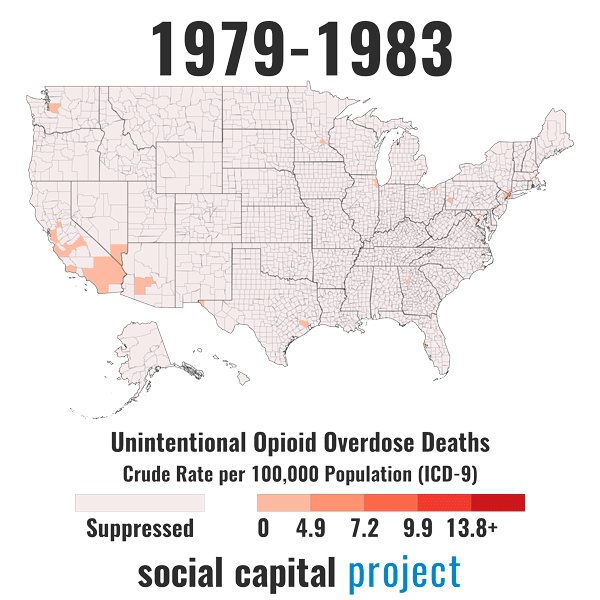
Thanks to Senator Mike Lee’s Social Capital Project for the map.
This is the “blue ribbon” commission appointed by the President and chaired by Governor Christie. Have you ever seen a red ribbon commission? Yellow? Magenta? I haven’t either.
A preliminary draft of its report emerged this week. There’s some real promise in it.
Most of the media attention focused on the call for the President to declare a state of emergency around the opioid crisis. That’ll be controversial because state of emergency is defined as “a situation of national danger or disaster in which a government suspends normal constitutional procedures in order to regain control.”
Suspension of normal constitutional procedures– that’s not something to be done casually. Pretty routine in a situation such as a hurricane, earthquake, or raging fire. Not so simple where the problem is more complex and not confined to a particular state or even region. There’s a civil rights issue. Over time, suspension of certain rights can (and often does) become the new normal.
I’ve heard it compared to the common practice of using portable classrooms– glorified trailers– to expand school capacity. It’s temporary when approved, but check back in five years and you may find they’re still in use. Meanwhile, there’s been no real effort to replace them with permanent structures. In reality, they were the permanent solution. We just pretended otherwise.
Moving on to the Commission’s recommendations: These are quite solid IMO. We sometimes forget that in addition to current users, we’re continually creating new ones, so the usual gateway– prescription opioids– must be addressed along with illicit use.
Online news analysis site Vox has a good overview of the draft.
The first certainly makes sense: Remove restrictions on inpatient reimbursement so Medicaid patients can be treated in larger facilities, rather than the current max of 16 beds (which mostly restricts it to hospitals). Problem: That’ll increase Medicaid expense, which is bound to draw criticism from budget hawks in Congress. Quite a few of those around.
Second: Increase access to methadone and buprenorphine. Also a sound recommendation. Although people keep referring to this as the “gold standard” in treatment — If it is, we should probably raise our standards. Dropout rates are high, particularly in terms of one year retention. Addiction is a relapsing disorder and most who stop the medication will quickly return to street use. Implants might be part of the answer, if the individual is willing. Many won’t be.
Still, there’s considerable harm reduction benefit if indeed the addict takes the medication as prescribed. Methadone’s cheap, but Suboxone is not, and Vivitrol is even pricier. That leads us back to the problem of drug pricing. Would Emergency status allow payers to negotiate lower prices?
Then there’s naloxone access. This has the most direct benefit in terms of saving lives, although as is often noted, that’s becoming more difficult as fentanyl and carfentanil penetrate the heroin market. Expense will also be an issue here. Naloxone is not cheap. Which frankly makes little sense as the drug itself has been around for ages and is readily available. Why does it cost so much?
You tell me.
Training and monitoring of opioid prescribing: To me, training is great, but monitoring is the key. Contemporary medical practice is in some ways set up to encourage reliance on opioids. Imagine you’re a medical practitioner in a busy clinic, seeing patient after patient and knowing you’re being timed, with penalties for being too slow (the current standard is somewhere around 12-15 minutes per). It’s a factory. And when you’re looking for quick solutions, opioids can seem like a universal screwdriver for a host of patient complaints.
Alternatives for pain: I’d like to believe there’s already been a multi-year effort towards this end, but I seriously doubt it. It was easier to rely on opioids. We allowed, even encouraged, over-reliance. Now we’re dealing with a particularly awful side effect.










